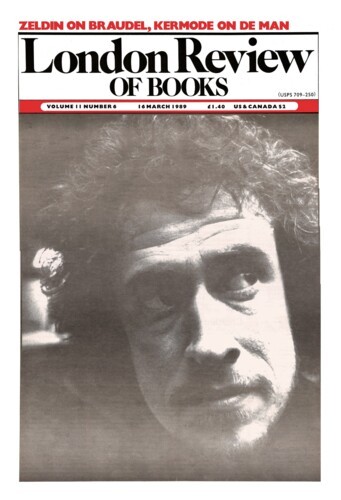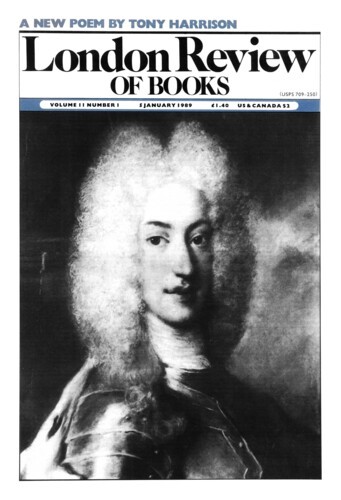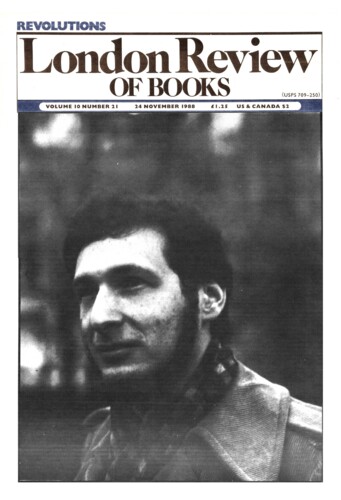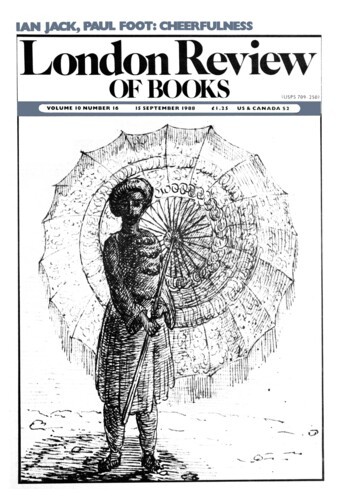‘I am going to make a scene when Momma comes home’
Adam Begley, 16 March 1989
Harold Brodkey, whose debut collection of stories, First Love and Other Sorrows, was greeted with well-deserved acclaim on both sides of the Atlantic when it appeared in1958, has produced a hefty new collection: Stories in an Almost Classical Mode. During the intervening thirty years his reputation, bolstered by occasional stories in the New Yorker and other glossy American magazines, has grown formidable. Such is the Brodkey mystique that his name, reverently intoned, conjures up an image of the Author at work on High Art. He has yet to publish a novel, but some of the new stories are novella-length – reportedly fragments from Party of Animals, his singularly famous unfinished, unpublished magnum opus. Besides offering a preview of coming attractions, Stories in an Almost Classical Mode, which includes stories written over a twenty-five-year span, charts the evolution of Brodkey’s fiction. His unexceptional subject-matter (the difficult intimate relations of middle and upper-middle-class white Americans, many of them Jews) hasn’t changed at all: but his voice, and his whole approach to this material, has changed greatly.’




